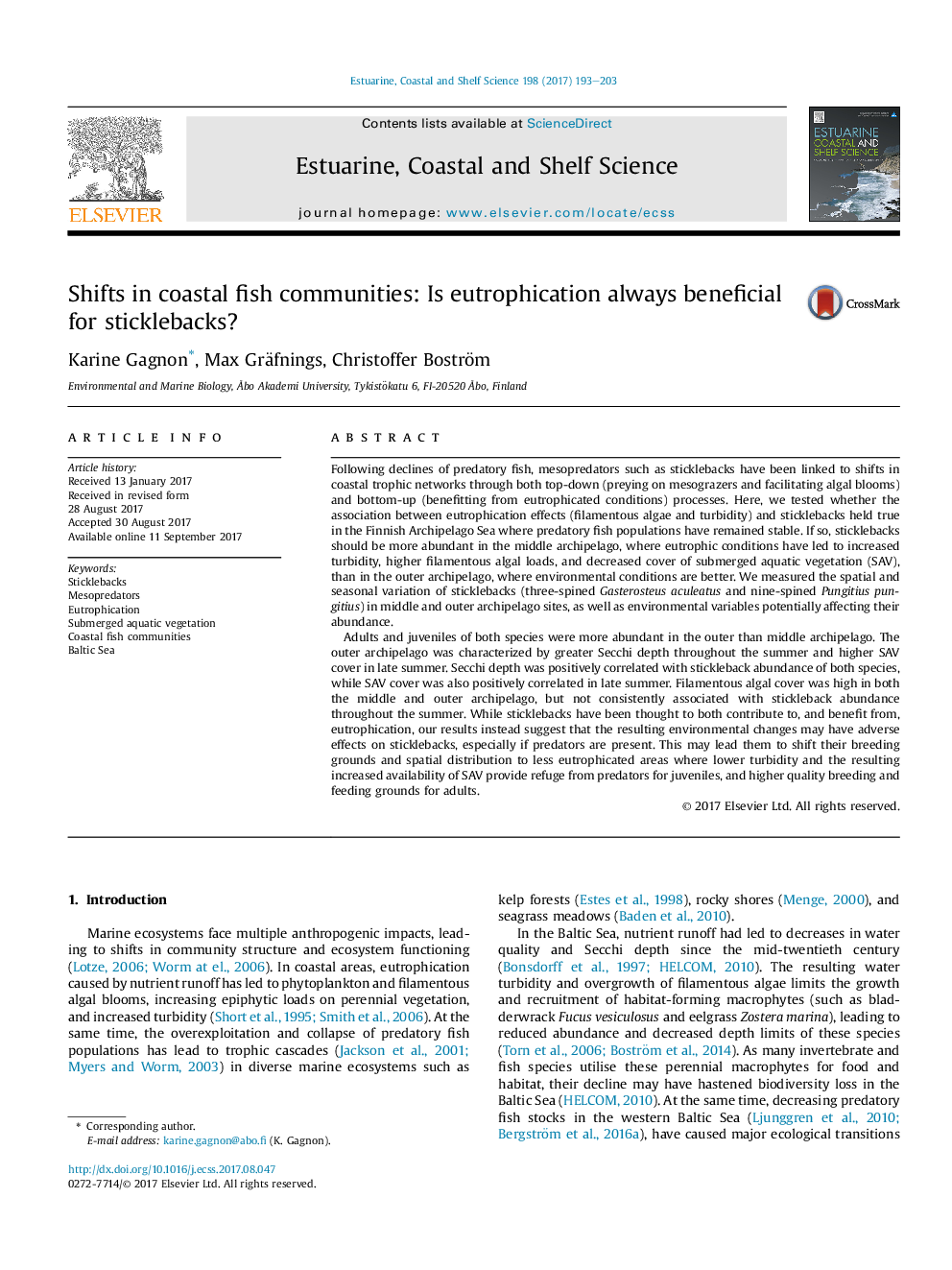| Article ID | Journal | Published Year | Pages | File Type |
|---|---|---|---|---|
| 5765307 | Estuarine, Coastal and Shelf Science | 2017 | 11 Pages |
â¢In the northern Baltic Sea, three-spined and nine-spined sticklebacks are the most abundant littoral fish species.â¢Sticklebacks are more abundant in less turbid waters with high SAV cover in late summer.â¢Stickleback abundance and filamentous algal cover are not consistently correlated.â¢Our results contradict studies showing higher stickleback abundance in eutrophicated areas with low predation pressure.â¢In the presence of predators, YOY sticklebacks likely depend on clear waters and structured vegetated habitats for shelter.
Following declines of predatory fish, mesopredators such as sticklebacks have been linked to shifts in coastal trophic networks through both top-down (preying on mesograzers and facilitating algal blooms) and bottom-up (benefitting from eutrophicated conditions) processes. Here, we tested whether the association between eutrophication effects (filamentous algae and turbidity) and sticklebacks held true in the Finnish Archipelago Sea where predatory fish populations have remained stable. If so, sticklebacks should be more abundant in the middle archipelago, where eutrophic conditions have led to increased turbidity, higher filamentous algal loads, and decreased cover of submerged aquatic vegetation (SAV), than in the outer archipelago, where environmental conditions are better. We measured the spatial and seasonal variation of sticklebacks (three-spined Gasterosteus aculeatus and nine-spined Pungitius pungitius) in middle and outer archipelago sites, as well as environmental variables potentially affecting their abundance.Adults and juveniles of both species were more abundant in the outer than middle archipelago. The outer archipelago was characterized by greater Secchi depth throughout the summer and higher SAV cover in late summer. Secchi depth was positively correlated with stickleback abundance of both species, while SAV cover was also positively correlated in late summer. Filamentous algal cover was high in both the middle and outer archipelago, but not consistently associated with stickleback abundance throughout the summer. While sticklebacks have been thought to both contribute to, and benefit from, eutrophication, our results instead suggest that the resulting environmental changes may have adverse effects on sticklebacks, especially if predators are present. This may lead them to shift their breeding grounds and spatial distribution to less eutrophicated areas where lower turbidity and the resulting increased availability of SAV provide refuge from predators for juveniles, and higher quality breeding and feeding grounds for adults.
